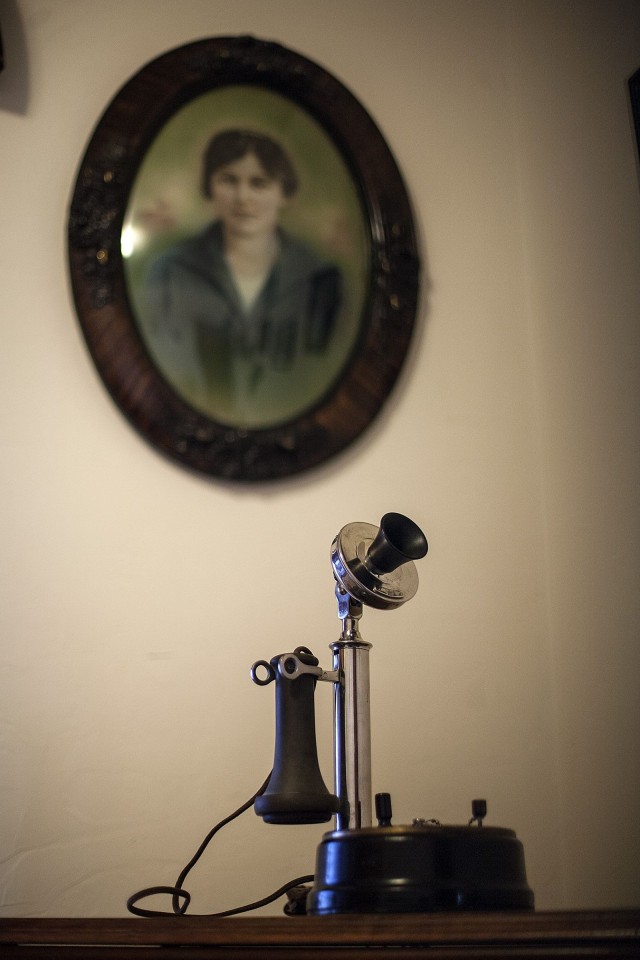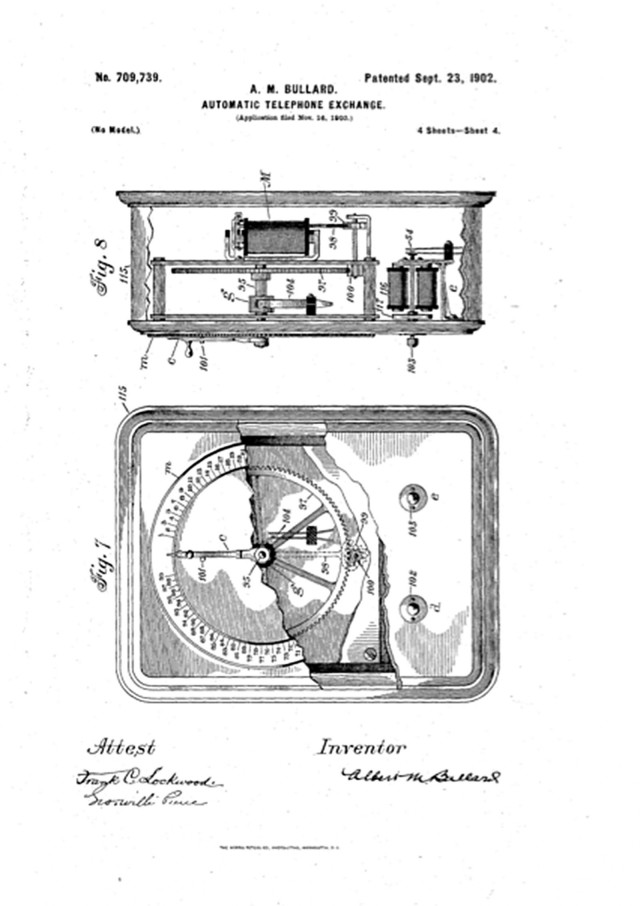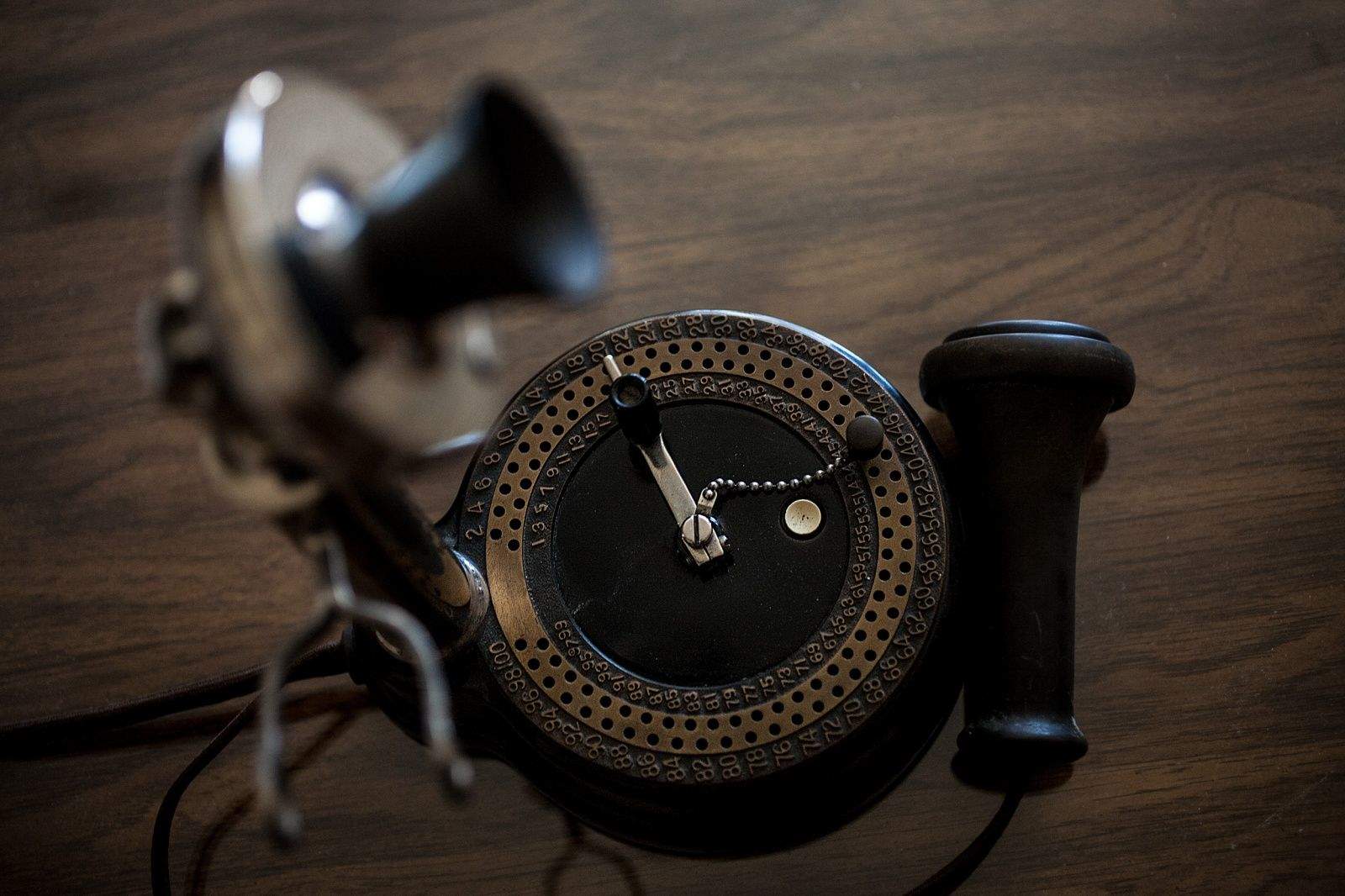This week’s ode to a technological marvel of the past would be a better read on an iPhone 6. How else to fully appreciate the design of the device in your hand than to read about when function and form first met on the telephone?
 Among the many items found in my aunt’s home when she died last year in a small town in Michigan’s upper peninsula were two telephones that are examples of the first dial phone.
Among the many items found in my aunt’s home when she died last year in a small town in Michigan’s upper peninsula were two telephones that are examples of the first dial phone.
If the once-common rotary dial phone seems strange today, behold the calling function on this 10-pound candlestick phone. On a circular base are 100 numbers. In communities too small to have a full-time operator, each home was assigned a number.

Like the operator who stuck a peg in a hole to connect the caller to another line, you placed the peg in the two-digit number you wanted to call. You then rotated an arm to the peg and released it to send a signal. Once you heard a buzzing sound, you pushed the white button to ring the other line.
“It was more like an intercom,” said Pete D’Acosto, a Texas collector of candlestick phones who bought one of my aunt’s phones from my brother. “It was created to bypass switchboard operators. Very few of these are out there and I would like to think I have the pre-eminent collection. For a long time people didn’t own phones, they rented them. These beautiful phones were invented and nobody has ever seen them.”
The phones in my aunt’s house were actually for residents of Queens, New York, according to a patent filed by the phone’s manufacturer, Western Electric. Work began on a dial system in 1900; in 1902, Bell Telephone installed a 50-line system. Within a year, a 100-line phone was created for Queens residents but that, too, quickly became obsolete because of rapid population growth, D’Acosto said.

So how did the phones from Queens end up in Michigan? My family is from the Keweenaw Peninsula, the northern-most part of Michigan which was once rich in copper.
My aunt said these phones were used in the small mining communities that populated the area around Houghton. Along with the phones was a 1945 phone book for the Copper Range Company. It is more like a pamphlet with small towns like South Range (my aunt’s town), Trimountain, Baltic and Painsdale. One page for Painsdale lists a handful of homes, a dentist and various shafts being actively mined. For a fire, dial 3.
My aunt thought these phones were being used as late as the 1950s and D’Acosto believes as few as one dozen are known to exist.
D’Acosto was running a television station and was in desperate need of a hobby, he said, when one day in the late 1980s, “it” clicked while watching an episode of The Andy Griffith Show. When he saw Andy picked up a candlestick phone and call the operator, he knew he wanted to collect this style of phones.
But collecting old telephones is not as easy as, say, old cameras or radios. When Alexander Graham Bell’s patents expired in the late 1890s, independent telephone companies sprang up and many manufacturers worked to replace the large, clunky wall phones in homes and business with elegant, upright models, D’Acosto said.
“This part of history is so fascinating to me,” he said. “They had to figure out how to pack all that technology into a relatively small phone. It was really the first introduction of form and function. They had to find a pretty way to do it.”
And companies did — but only between 1894 and 1910. Most went out of business or were bought up by Bell Telephone at the start of a monopoly that lasted through the 1980s.
It’s rare to find the non-Bell candlestick phones. Bell introduced its first dial phone in 1919 but a dial system spread very slowly through the United States. Even as late as the 1950s, Bell was producing public service films to educate communities on how to dial a phone. Here are a couple from 1927 and 1936.
https://youtu.be/naQ9EMJEv0U


